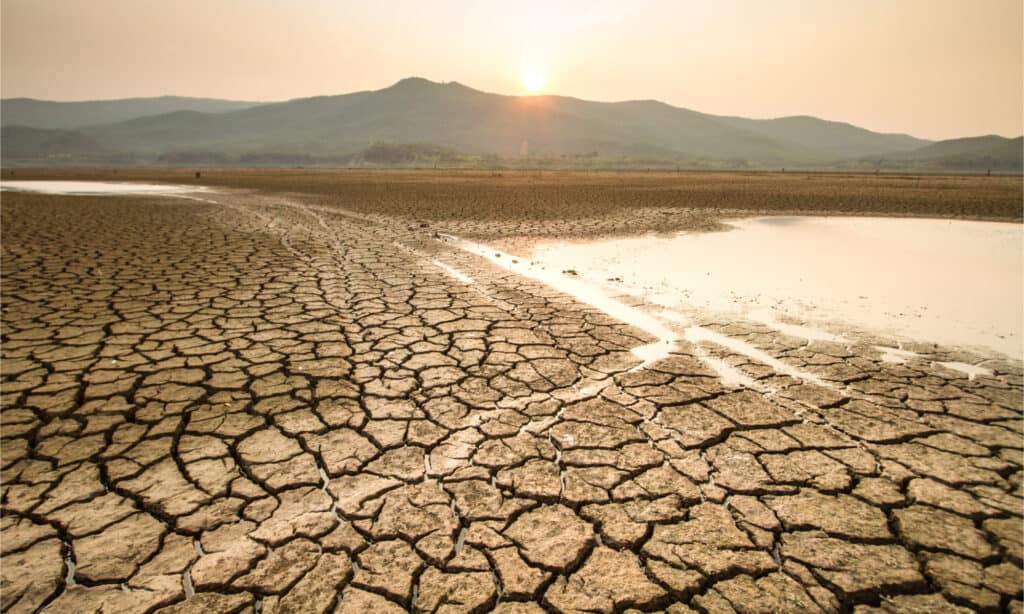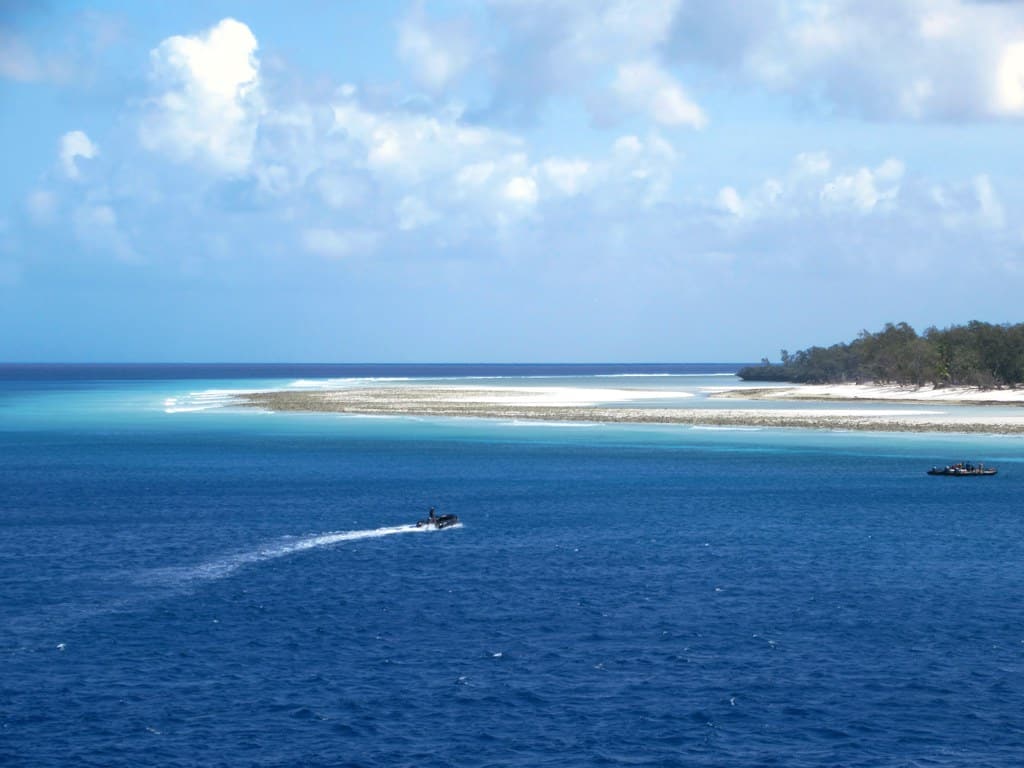Introduction
The arid regions of the Western United States are no strangers to drought. In fact, drought occurrences within the last two decades have been frequent. However, the recent rise in drought conditions is concerning, as water levels decrease, and crops suffer. Some experts believe that the megadrought in the West is the worst drought to occur in over a millennium. As researchers and politicians work together to stop the damage done by the megadrought, new theories and proposals about diverting water to the West have arisen. Discover if diverting the Mississippi River to the West can be beneficial in stopping the drought and find out three alternative courses of action.

Drought in the Western United States is more serious than many people realize. The current
drought conditions might be the worst
in the last 1,200 years.
©Jake Osborne/Shutterstock.com
Drought in the Western United States
A drought is a type of natural disaster in which a region experiences an extreme lack of rain for a prolonged time. Drought can include consequences like depletion of moisture from the soil and ground, damage to crops, and water shortages. The rate of precipitation in a certain area can contribute to drought conditions, too. When evaporation and transpiration happen steadily, but precipitation slows down, water enters the atmosphere quicker than it is replenished on Earth’s surface. When the process continues for an extended period, experts label it as a drought.
The Western United States is comprised of most states west of the lower and upper Mississippi River Basin, including California, Texas, Montana, Arizona, and more. According to the U.S. Department of Agriculture, drought conditions in the West are not infrequent. Between 2002 and 2006, between 50% and nearly 70% of land in the West experienced severe drought conditions. Again, in the second half of 2007, there was a significant spike in drought conditions in the region.
From 2012 to 2016 and between 2018 and 2019, an average of 40% of land in the western part of the country reported severe drought conditions. Former droughts in the West have helped researchers to better understand the megadrought happening now, which began nearly three years ago. Around the start of the COVID-19 pandemic in 2020, drought conditions spread quickly throughout the West.
At peak drought conditions, 80% of land in the West recorded severe drought in 2021, and exceptional drought, an even more concerning diagnosis, occurred throughout nearly a quarter of the West’s land. While precipitation in the West increased during the winter of 2022-23, drought still plagues around 60% of the region, resulting in water shortages, loss of agriculture, the drying up of entire lakes, and other adverse effects.

In the last two years, the West has experienced drought conditions throughout at least 60% of land in the region.
©Piyaset/Shutterstock.com
Diverting the Mississippi River to the West
Some experts and legislators believe that borrowing water from the expansive Mississippi River and diverting it to the West could be the solution to drought conditions. In 2021, the Arizona state legislature requested that Congress examine the possibility of moving waters from the Mississippi River westward into the Colorado River either through a pipeline or through water importation.
The idea of diverting the resources of one water source to another area is not new. Rather, the proposal concerning the Mississippi River revitalizes the potential of large-scale water redistribution. The 1960s saw the first proposal of this kind in which water in the state of Alaska would be redistributed through a series of canals and reservoirs. Since then, other projects of water distribution have drawn on this original idea. While no major projects, including that of Alaska’s, came to fruition, experts completed some of the proposals on a smaller scale.
For example, the Missouri River has produced around 6,000 gallons of water, which have been transported to Kansas and Colorado. The goal of this redistribution is to resupply a depleted aquifer. In addition, some water from the Great Lakes may be used in other water redistribution projects. Therefore, diverting the Mississippi River to the Western United States might be feasible, and the West could surely benefit. However, this type of project has only been achieved on a small scale, leaving people to wonder if this large-scale plan is possible.
Is Diverting the Mississippi River Possible?
Diverting the Mississippi River to the Colorado River, for example, is not impossible. However, the process that experts, scientists, and representatives would have to go through could take years, perhaps decades. Throughout these decades, changes in leadership and other positions could disrupt the flow of construction, resulting in a prolonged process.
After decades of work and project completion, it could be too late to save the West after all. As drought conditions worsen due to factors like precipitation and climate change, time is of the essence. However, officials may not have enough time to complete the intricate project.

The Mississippi River could be diverted to the West to solve drought conditions. The plan is possible, but it is likely less reasonable than some alternatives.
©NPS/Gordon Dietzman / Public Domain – License
Estimated Cost
Furthermore, creating a system to divert Mississippi River water to the West would require funding. Some estimate that the project could cost billions of dollars. Many people wonder where the money would come from, too. Would the project be privately funded, or would taxpayers carry most of the financial burden? In addition, how would state governments allocate resources to the project? Would politics get in the way of progress? These are examples of questions on the minds of people considering, supporting, and opposing the possibility of diverting the Mississippi River to the West.
According to research by the U.S. Department of the Interior’s Bureau of Reclamation, a water distribution project of this size would cost around $1,700 per acre-feet of water. In addition, it would take approximately 30 years to complete. A group of graduate students from Western Illinois University also investigated the project and determined that a channel or pipeline constructed would have to measure around 100 feet in width and attain a depth of 61 feet.
While the construction seems complex and, perhaps, impossible, it can be done. Unfortunately, though, the intricacies and details that the project requires, alongside its cost, make the potential of diverting the Mississippi River less attractive. For instance, refilling Lake Powell and Lake Mead–two depleted reservoirs in the West–would require over $130 billion, not including construction and equipment costs. That $130 billion accounts for the water alone.
Other Ways to Solve Drought in the West
While diverting the Mississippi River to the West is possible, it may not be the best course of action. The project would require billions of dollars, a huge labor force, long-lasting construction, and political agreement. Many experts believe that other solutions to drought are less expensive, easier, less time-consuming, and less divisive than diverting the Mississippi River.
Reduce Water Usage
One solution to drought in the Western United States is to reduce the water people use for unnecessary amenities. For example, most states that mandate a reduction in water usage prohibit turning on sprinklers on lawns and golf courses. Since watering grass in these areas only promotes aesthetics, some states, like Arizona, are cracking down on wasteful water use.

Some western
states have decided to regulate the use of sprinklers to water grass on lawns
and golf courses. These regulations aim to conserve water in the West.
©iStock.com/MaYcaL
Slow Climate Change
Another way to mitigate drought conditions is to work toward slowing climate change. Climate change occurs when greenhouse gases released into the atmosphere combine with heat from the sun. A chemical reaction results that traps heat close to Earth’s surface, leading to increased temperatures. Rising temperatures result in climate change, which is defined as prolonged changes in certain climates.
When temperatures rise and climates gradually become warmer, evaporation increases. Increases in evaporation result in decreased surface water and drier soils. Thus, when the rate of precipitation declines or remains steady as evaporation increases, drought conditions worsen. In addition, decreased precipitation cannot replenish water sources, and climates gradually become drier.
By reducing the amount of fossil fuels released into the atmosphere, climate change begins to slow, and temperatures stop increasing. Environments can gain stability in this way, and droughts are less frequent and less severe. Therefore, halting climate change could be the key to mitigating exceptional drought conditions.
Desalination
Finally, desalination could improve drought conditions and increase water levels in depleted areas, such as Lake Mead. During desalination, reverse osmosis can isolate water molecules from impurities, such as sand and salt. Through this method, purified water results, which could be deposited into the West.
Rather than constructing a pipeline from the Mississippi River to the Colorado River, officials could construct a pipeline from the Pacific to a desalination facility that leads to the West. However, this solution is likely as expensive and time-consuming as the Mississippi River pipeline project. Therefore, desalination could be a lost cause, being as difficult and strenuous as the former solution.

Water from the Pacific Ocean could be diverted to the West through desalination, which could be used for personal water usage and for agriculture.
©David Stanley / flickr – License
The photo featured at the top of this post is © Photo Image/Shutterstock.com
Thank you for reading! Have some feedback for us? Contact the AZ Animals editorial team.






